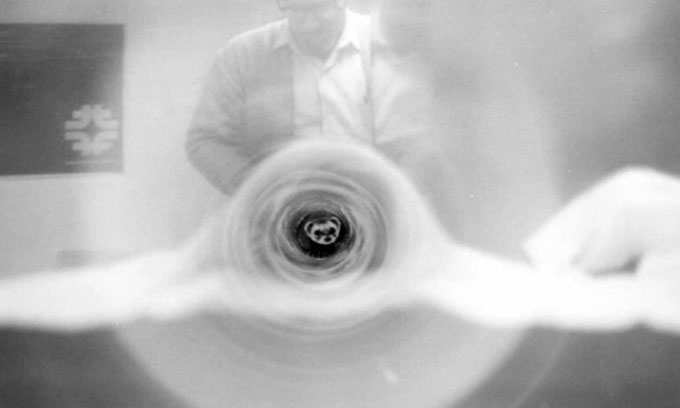American scientists once relied on the assistance of a small female ferret to maintain a $250 million particle accelerator over half a century ago.
Decades ago, laboratory maintenance regulations were not as strict as they are today. This contributed to the brilliant minds at the U.S. National Accelerator Laboratory (now Fermilab) coming up with a unique initiative to clean the particle accelerator in 1971, according to Science Alert.

Ferret Felicia cleaning the particle accelerator at NAL. (Photo: NAL).
In February 1971, the Main Ring particle accelerator at the NAL Meson Laboratory was newly completed, and physicists were eager to test the machine. This $250 million device includes a 6.4 km long pipe and 1,014 powerful magnets that control and accelerate protons to an energy level of 200 billion electron volts. The scientific potential of this machine was enormous.
By the end of April that year, things did not go as expected. Six days after the last magnet was installed, engineers discovered that two magnets were malfunctioning. This was no small issue; each magnet was about 6 meters long and weighed 12.5 tons. The engineering team took a long time to replace the two magnets. However, the problem kept recurring. In total, they had to replace about 350 magnets.
Ultimately, engineers found that the problem lay with tiny metal fragments left in the accelerator. The accelerator pipe had a diameter only slightly larger than a tennis ball, which made it challenging for the engineering team to remove the metal debris. Physicist Ryuji Yamada suggested pulling the magnets along the pipe. While the idea was promising, the question remained: who would pull the magnets? British physicist Robert Sheldon, a researcher full of ideas, came up with a solution.
According to computer scientist Frank Beck, in Sheldon’s home region of Yorkshire, hunters use ferrets. “Ferrets are mammals that love to crawl through tunnels and chase rabbits. A ferret would not hesitate to enter a stainless steel pipe, even if the journey was long and unclear. Moreover, this was an eco-friendly solution to address the technical problem, and everyone loved the idea,” Beck shared.
Wally Pelczarski, the designer of the Main Ring particle accelerator, who was tasked with arranging for the ferret to clean the pipe, contacted Wild Game and Fur Farm in Gaylord, Minnesota, and asked them to select the smallest ferret. For $35, the farm sent a ferret named Felicia. At just 38 cm long, Felicia was particularly small and well-suited for the pipe that needed to be cleaned.
Felicia wore a diaper to prevent the accelerator from being contaminated with ferret droppings and a leather harness. The researchers then trained her to crawl through the dark tunnel while wearing the harness. The ferret would crawl from one end of the 100-meter long tunnel to the other, with a reward of chicken, liver, fish heads, or hamburger after completing a segment. An engineer at the end of the pipe would attach a cleaning cloth soaked in cleaning solution to the harness to collect the metal debris.
This method proved very effective, and scientists were able to clean the pipe with the help of the small ferret. However, over time, their demands exceeded Felicia’s capabilities, and engineer Hans Kautzky developed a new solution. He attached a Mylar disc to a flexible cable to pull through the pipe using compressed air. Felicia retired after more than a dozen cleaning sessions. Although the scientists at NAL were very fond of her, Felicia did not live long. She died in May 1972 from a ruptured abscess in her intestines.


















































